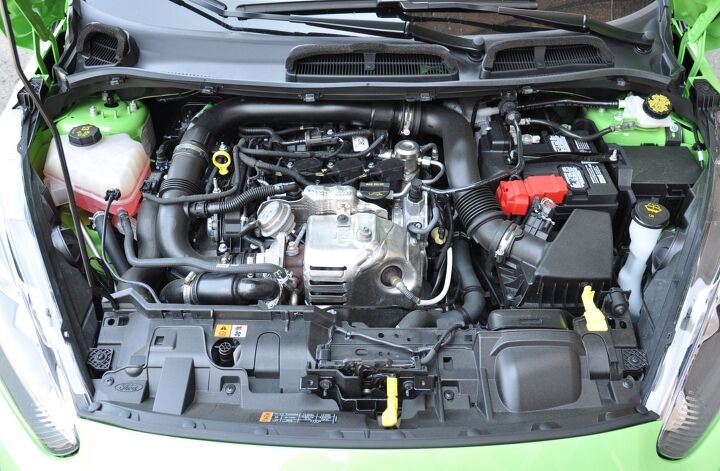Save Money on Repairs with Regular Ford Fiesta Engine Inspections
Wiki Article
Opening the Power of Engines: A Comprehensive Guide to Efficiency and Efficiency
Recognizing the intricate mechanics of engines is crucial for both performance fanatics and daily chauffeurs. The responses may redefine our technique to engine efficiency and efficiency in ways that are both enlightening and vital.Recognizing Engine Basics
What constitutes the fundamental auto mechanics of an engine? At its core, an engine is an equipment developed to convert gas right into mechanical energy with a collection of regulated explosions or burning procedures.The crankshaft then transforms this linear movement into rotational power, which eventually powers the automobile. The camshaft regulates the opening and closing of the shutoffs, controling the consumption of air and gas and the expulsion of exhaust gases. Furthermore, the engine relies upon a meticulously calibrated fuel-air mix, ignition system, and cooling down system to make sure optimum performance and performance.
Comprehending engine basics also entails acknowledging the relevance of engine cycles, such as the four-stroke cycle, which consists of intake, compression, exhaust, and power strokes. Each stage is crucial in ensuring the engine functions smoothly and successfully. Proficiency of these fundamental auto mechanics prepares for exploring much more intricate engine dynamics and performance metrics, important for maximizing both power outcome and performance.
Trick Efficiency Metrics
Key performance metrics are essential for reviewing an engine's performance and power output, giving beneficial understandings for both producers and customers. These metrics work as standards for engine efficiency, allowing for notified decisions in getting, layout, and manufacturing.Among the key metrics is horse power, which evaluates the engine's capacity to perform work over time. Torque, gauged in pound-feet, is one more vital metric that indicates the engine's rotational force, directly impacting acceleration and towing ability. Gas performance, typically determined in miles per gallon (MPG) or liters per 100 kilometers (L/100km), assesses exactly how effectively the engine transforms gas into movement, influencing ecological factors to consider and functional costs.
Furthermore, thermal efficiency measures how well an engine converts gas energy right into helpful job, exposing insights right into energy losses largely through warm. Emission levels, including CO2 and NOx, are additionally critical, reflecting the engine's ecological influence and conformity with regulatory criteria.

Tuning Methods for Effectiveness
Tuning methods play a significant duty in enhancing engine efficiency by optimizing performance metrics recognized in earlier discussions (ford fiesta engine). Various approaches exist to tweak an engine, each adding to boosted fuel economic climate and lowered exhaustsOne efficient method is readjusting the air-fuel ratio, guaranteeing the engine runs within the optimal combustion regime. A leaner combination their explanation can improve fuel efficiency, however it must be balanced to stop misfires or engine knock. Additionally, reprogramming the engine management system can recalibrate parameters such as ignition timing, which better enhances performance while maintaining power outcome.
An additional vital approach includes customizing the consumption and exhaust systems. Updating to high-performance air filters and exhaust headers can minimize back stress, helping with better air movement. This allows the engine to breathe even more openly, leading to enhanced combustion efficiency.
Moreover, the implementation of advanced adjusting tools, like dyno screening, offers precise information that makes it possible for targeted adjustments. Frequently checking these efficiency metrics makes certain that tuning efforts yield the desired efficiency results. Collectively, original site these strategies not only strengthen engine performance but additionally contribute to lasting sustainability in engine operations.
Upkeep for Optimal Efficiency
Normal engine upkeep is essential for achieving ideal performance and durability. A well-kept engine not only runs efficiently but also lessens the threat of expensive repairs and malfunctions. Secret parts calling for regular attention include oil, filters, belts, and spark plugs.Changing the engine oil at suggested periods is important, as oil lubricates moving parts and prevents overheating. In a similar way, changing oil and air filters guarantees that impurities do not impair engine function. Neglecting these elements can cause lowered performance and potential engine damage.
Furthermore, evaluating and changing used belts and hoses is essential to stop sudden failings. Timing belts, particularly, must be changed according to the supplier's routine to avoid tragic engine damages.
Flicker connects must additionally be checked and changed as necessary, since they play a vital function in ignition and gas effectiveness.
Future Patterns in Engine Innovation
Welcoming advancements in technology, the future of engine style is poised to transform efficiency and effectiveness across various applications. Among one of the most significant trends is the change towards electrification. Crossbreed check out this site and fully electrical powertrains are coming to be progressively traditional, providing lowered emissions and enhanced gas effectiveness. This transition is not merely a fad yet a requirement driven by regulative stress and customer demand for sustainable remedies.Furthermore, innovations in materials scientific research are causing lighter, more powerful parts that enhance engine efficiency while decreasing energy intake. Advanced manufacturing strategies, such as 3D printing, enable the production of intricate geometries that enhance air movement and thermal management, hence optimizing burning procedures.
Additionally, the combination of man-made intelligence and artificial intelligence is established to change engine diagnostics and performance adjusting. These innovations can assess large amounts of data in actual time, enabling predictive upkeep and customized performance enhancements.
Verdict
In verdict, unlocking the power of engines calls for a detailed understanding of their technicians and efficiency metrics. Implementing effective tuning techniques and adhering to regular upkeep techniques dramatically improve engine capacities.In addition, the engine counts on a thoroughly calibrated fuel-air combination, ignition system, and cooling system to make certain ideal performance and performance.
Recognizing engine fundamentals also entails identifying the relevance of engine cycles, such as the four-stroke cycle, which includes consumption, compression, power, and exhaust strokes. Proficiency of these basic mechanics lays the foundation for checking out much more intricate engine dynamics and efficiency metrics, vital for optimizing both power result and performance.

Accepting improvements in innovation, the future of engine layout is positioned to reinvent performance and effectiveness throughout various applications.
Report this wiki page